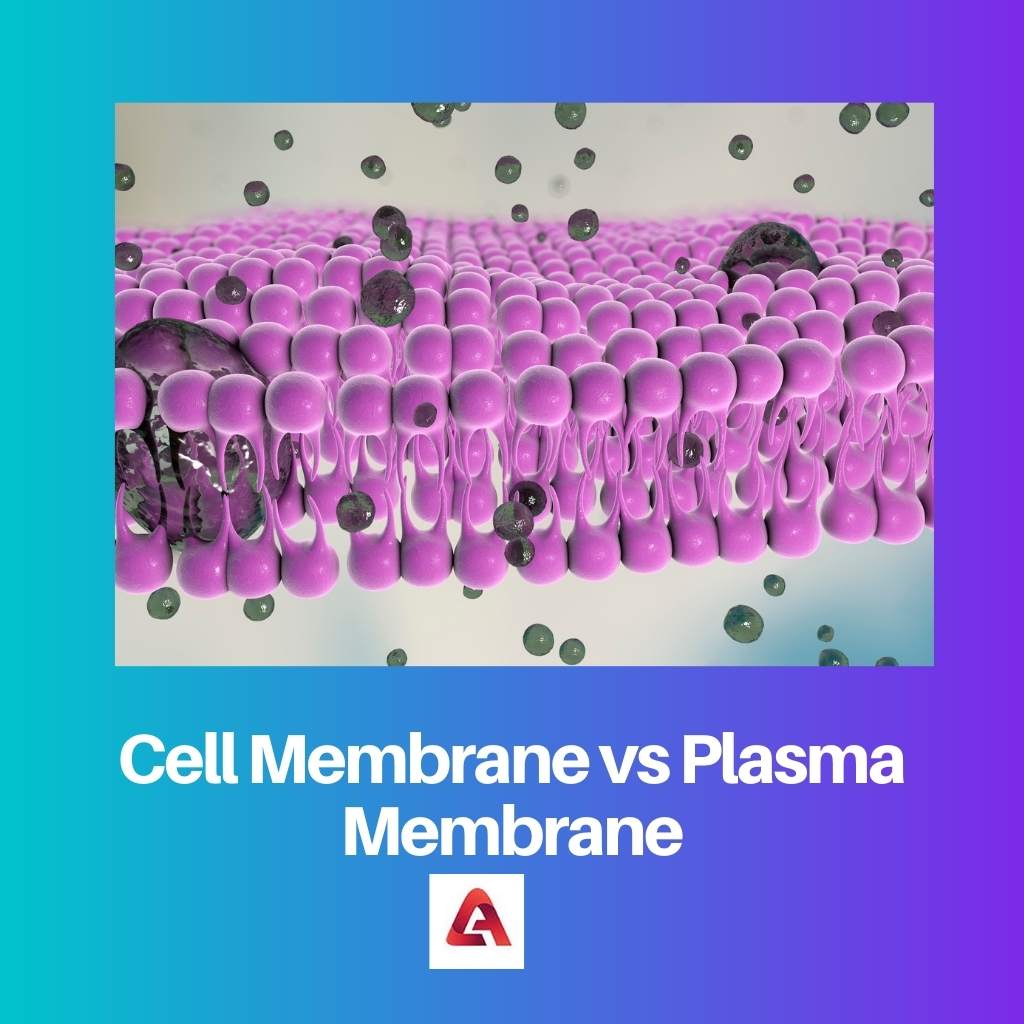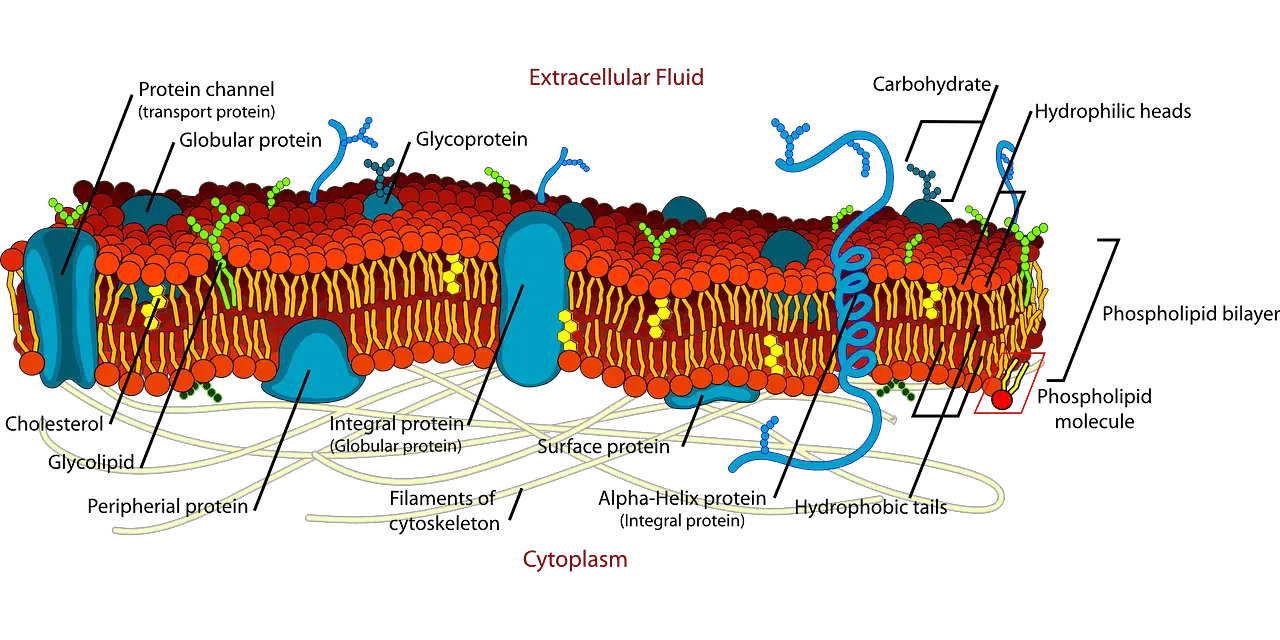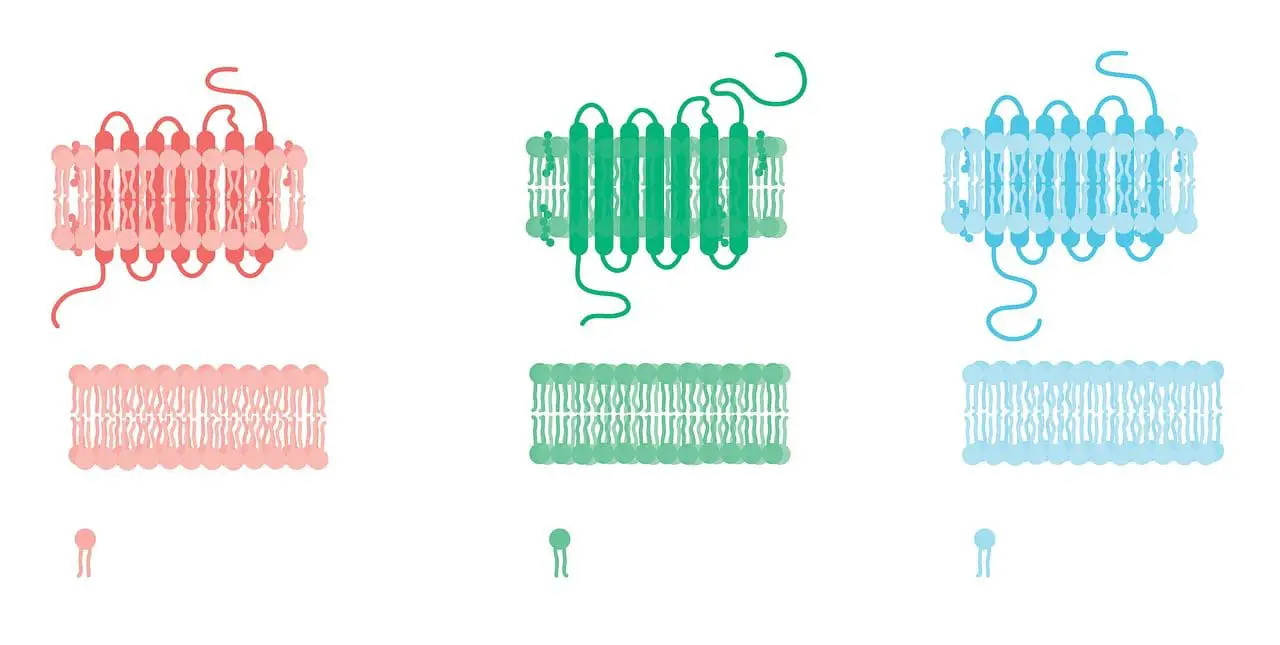Every organism is made of the smallest single unit called a cell. It makes up tissues, then tissue systems, organs, and so on an individual.
It comprises many components inside it which make up an entire cell they are – Mitochondria, Golgi Apparatus, Cell Membrane, Cell Wall (only in plants), Endoplasmic Reticulum (ER), Nucleus, etc. These cell organelles have different functions and serve different purposes.
Key Takeaways
- The cell membrane is the outermost layer that encloses the cell, while the plasma membrane is the outer layer that encloses the cytoplasm.
- The cell membrane is made up of lipids and proteins, while the plasma membrane is made up of lipids, proteins, and carbohydrates.
- The cell membrane maintains the cell’s shape, while the plasma membrane regulates the movement of substances in and out of the cell.
Cell Membrane vs Plasma Membrane
The cell membrane is a term that refers to the membrane that surrounds all types of cells, including prokaryotic and eukaryotic cells. The plasma membrane is a term that refers specifically to the cell membrane of animal cells, which is made up of a phospholipid bilayer and various proteins.

The cell Membrane is the outermost covering present in a cell. It has some projections called cilia, which help in the Movement and transporting of food. It also helps in protecting the cell and its components from foreign invaders.
Plasma Membrane is the outermost covering of any cell sometimes or a cell organelle. It helps in protecting the cell organelles from bursting.
Comparison Table
| Parameters of Comparison | Cell Membrane | Plasma Membrane |
|---|---|---|
| Location | The cell Membrane is said to cover all the cell contents inside it. | It constitutes the particular cell organelles or a cell. |
| Feeding and Movement | For movement and feeding, it has cilia. | It is absent in them. |
| Tonicity | It helps in controlling it | It does not help that. |
| Protection from Invaders | It protects from invaders. | It does not protect from the invaders. |
| Cytokinesis | It plays a part in cytokinesis. | Not always takes part in cell division. |
| Signal Transduction | The first step and receiver in the process | Not the first step always. |
| Antimicrobial Targets | Always | Not Always |
What is a Cell Membrane?
The outermost covering of the cell (except in Plant Cells, as they have additional coverage of rigid Cell Walls) is known as Cell Membrane.
While we look at the composition of the cell membrane, there are many theories and models on the structure of the Cell Membrane, but Singer and Nicolson give the best-fitted and accepted model of the Cell Membrane.
Their model is named the Fluid Mosaic Model, which states that the Cell Membrane is made up of a bilayer of phospholipids and proteins, along with glycoproteins and glycolipids.
Some of the functions of the Cell Membrane are discussed below –
- It helps in the regulation of substances in or out of the cell.
- Protects cell from foreign invaders and pathogens.
- It plays an essential role in the signal functioning of the cell.
- It acts as a selective barrier and lets permeable things pass in and out.

What is Plasma Membrane?
Plasma Membrane constitutes the outer covering of the cell organelles. Plasma Membrane is a very thin layer. It is 5-10nm in size. Plasma Membrane is quite evident through a microscope.
The composition of the plasma membrane is that it is made up of carbohydrates, proteins, and lipids and is said to be a living and metabolically active layer. Plasma Membrane remains the same throughout its life. No changes are observed in thickness or composition.
The additional projections called cilia are absent in the plasma membrane, so it does not participate in the cytokinesis. Some of the functions of the Plasma Membrane are given below –
- It acts as a barrier between the cell components and the cell organelle.
- Only selective molecules are allowed to pass through it.

Main Differences Between Cell Membrane and Plasma Membrane
- The Cell Membrane helps maintain a cell’s tonicity, while the Plasma Membrane does not participate.
- The cell Membrane helps guard the cell against foreign invaders, while it is the opposite for the Plasma Membrane as it does not function that way.
- Cell Membrane uses its projections called cilia which help the cell in Movement, while Plasma Membrane does not have any cilia on them.
- The cell membrane is divided by cytokinesis, an essential step in cell division and takes part in it. At the same time, Plasma Membrane does not always participate in cytokinesis.
- Cell Membrane is said to be the first receiver of the transduction signal and the first participant, whereas Plasma Membrane is not the first receiver and does not always participate.
- Cell Membrane is easily targeted place by antimicrobial agents, while Plasma Membrane is not easily targeted by antimicrobial agents.

References
- https://pubs.acs.org/doi/abs/10.1021/ac301776j
- https://ieeexplore.ieee.org/abstract/document/6268438/
- https://www.sciencedirect.com/science/article/pii/S0006349593815315
- https://journals.biologists.com/jeb/article/200/23/2927/7650/Cell-membrane-lipid-composition-and-distribution

I didn’t expect to find such an informative post. The detailed comparison table helped me understand the differences between the two types of membranes.
Right, Ycampbell! It’s impressive how such complex information is presented in a clear and understandable manner.
Completely agree with you Ycampbell. A very well written article!
The thorough explanation of cell and plasma membranes is praiseworthy. A well-written article with significant educational value.
Absolutely, Isobel76. It’s evident that the post was crafted with meticulous attention to detail.
The article effectively outlines the critical differences between cell and plasma membranes. A valuable resource for learning and reference.
I couldn’t agree more, Allen Neil. The distinctions provided are crucial for anyone studying this subject.
The topic is presented with utmost clarity, making it easily understandable for those with varying levels of knowledge on the subject.
Exactly, King Evelyn. The clear and concise presentation of information is truly noteworthy.
The post offers an exceptional explanation of the difference between cell and plasma membranes. It has helped me gain a better understanding of this topic.
I totally agree, Ruth79. This post is very informative and provides crucial insights.
Yes, I agree. The depth and details of the explanation are truly remarkable.
This post presents an in-depth comparison between cell and plasma membranes. It’s always great to find such valuable educational content.
Absolutely, Dylan Holmes. The comparison made understanding the topic much easier.
I second your thoughts, Dylan Holmes. This post is an excellent source of knowledge.
I must say, this post is both incredibly informative and well-structured. A great read for anyone interested in cell biology.
I couldn’t agree more, Tom Stewart. The structure and depth of information are truly commendable.
I appreciate how the article delves into the key takeaways. It has certainly broadened my understanding of cell and plasma membranes.
I couldn’t agree more, Duncan70. The key takeaways are very beneficial to readers.
Indeed, the key takeaways serve as a great summary of the important information provided in the post.
A well-researched and thorough article. It’s evident that the content is a product of significant expertise and knowledge.
Absolutely, John Murphy. The depth of research and quality of information makes this a standout piece.
The Fluid Mosaic Model explanation was particularly insightful. The post’s detailed approach helps learners comprehend complex concepts effectively.
I completely agree, Arthur Robinson. The thorough insight into the model is commendable.